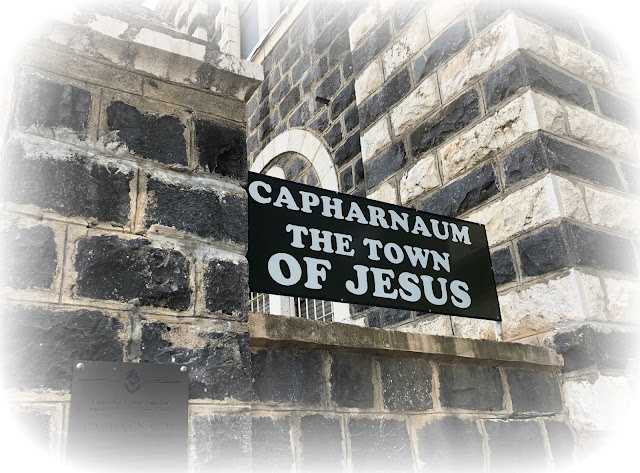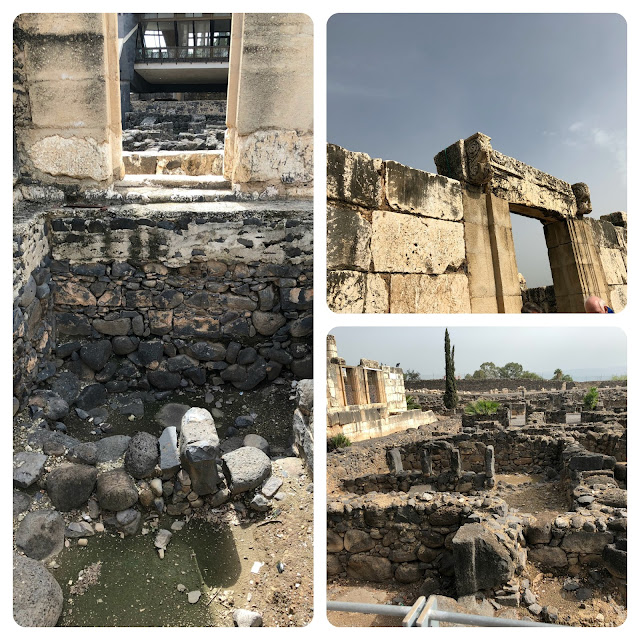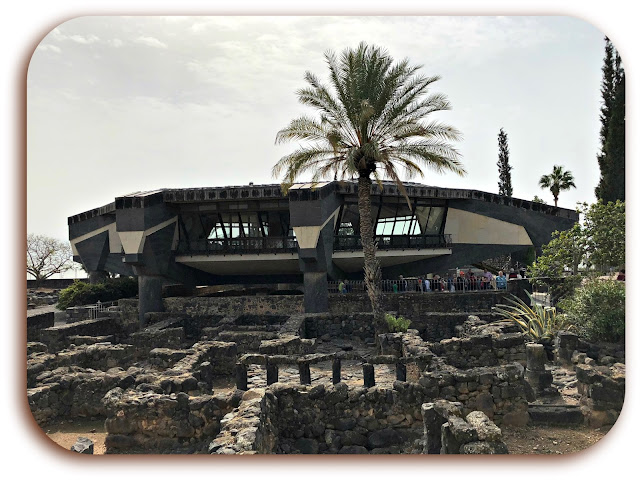“A man practices the art of adventure when he breaks the chain of routine and renews his life through reading new books, traveling to new places, making new friends, taking up new hobbies and adopting new viewpoints” ~Wilfred Peterson
~~~~~~~
When Jesus began his ministry he chose Capharnaum (Capernaum) as his home. He would set out from here on his journeys healing and teaching around the Sea of Galilee. It is here that he taught in the synagogue.
The went to Capernaum, and when the Sabbath came, Jesus went into the synagogue and began to teach. The people were amazed at his teaching because he taught them as one who had authority, not as the teachers of the law. (Mark 1: 21-22)

Synagogue
Dated to the 5th century
. . .the synagogue, [is] dated to the fifth century AD by the coins and pottery found at the floor level of its wall. . .Many scholars agree that this synagogue stands on top of a basalt synagogue that goes back to the first century AD. It is almost certain that this earlier synagogue was the very synagogue that Jesus and his followers attended and the one where our Lord spoke about himself as the bread of life (John 6:59). Come and See: A Catholic Guide to the Holy Land, by Rev. Charles Samson, SSL
Ruins of the City
The Church of Saint Peter
The Church of Saint Peter
The Church of Saint Peter in Capharnaum is built over Saint Peter's home in such a way that the ruins are still visible. It was remarkable.
On leaving the synagogue he entered the house of Simon and Andrew with James and John. Simon's mother-in-law was sick with a fever. They immediately told him about her. He approached, grasped her hand, and helped her up. Then the fever left her and she waited on them. (Mark 1: 29-31)
It was amazing to walk where Peter lived. The town where he and his family lived and walked the streets and worshiped together. Oh, the wonder of it all!
~~~^j^~~~
Thanks be to God!!
Cathy
Please join me for Mosaic Monday, Through My Lens, Travel Tuesday, and Our World Tuesday.




























